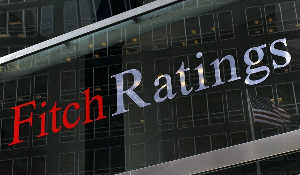By Chris Mensah-Ankrah
“It is so surprising, is it not, now even the worst happenings of the past acquire sweetness in the memory? Old harsh distresses are now merely pictures and tastes which hurt no more like itching scars which can only give pleasure now.”(Ayikwei Armah).
Well these thought provoking words of the great Ghanaian writer outlines the numerous paradoxes of life that I know full well; however, what I don’t know is whether the same explains the long held origins of soccer rivalries of which roots vary in religion, economic, social and political.
Scars do have long lasting impressions on our human minds. They leave us wandering in the past and may be best described as perfect windows to relive historical landmarks of society.
Well, after much pondering, it dawned on me that soccer rivalries are an expression of unsettled scores of the past and a gateway to understanding some few elements and dynamics of a cherished but chequered past.
In psychological terms, these scars could be termed post stress traumatic disorder of which is still felt by society at length and breadth.
For instance, the El-Classico is seen as the rebirth of the Spanish civil war and the old firm derby constituting Scotland’s finest Celtic and Rangers takes us to a historical journey of sectarianism a term apportioned to the age old catholic – protestant feud particularly present in Ireland.
Also elemental in the old firm is the political battles of the loyalists and republicans and of historical national feuds between Scotland and the Irish. However, most soccer rivalries particularly derbies, are “social scars “ emanating from a class system comprising the working class on one side and upper – middle on the other side.
Scars of class systems stems back to medieval Europe where feudalism was then state of the art governance, in fact it was fashionable at its time.
Feudalism has been condemned by social scientists and historians alike, Karl Marx describes it as the power of the ruling class rested on their control leading to a class society based upon exploitation of peasants who farm the land, especially under serfdom, a system which made the king so powerful.
The aftermath of feudalism is the prevalent of the social order of upper – class and working – class espoused by some very primitive social commenter’s and scientists as “God created social order”.
Though the effect of the class system has been watered down due to access of all to home ownership, cars among other assets typical of the 21st century, the scars linger on.
Rivalries between Galatasaray and Fenerbache (Turkey), Lazio and Roma (Italy), River Plate and Boca Juniors (Argentina) is generally based on a class system where supporters of Galatasaray are thought to be of the upper class and Fenerbache, the working class.
In the derby della capitalle, Lazio’s fans are historically wealthy and right wing and Roma fans traditionally more working class and left wing.
In the River Plate – Boca Juniors rivalry the wealthy people from Plate are strong sympathizers of the once dreadful river plate and the working class masses being of the Boca Juniors whose jersey was gracefully won by the legendary Diego Maradona.
Derby Della Maddodina has firm roots from a class system in the artistic city of Milan. The name Maddodina is the statute of the Virgin Mary in the heart of the city which clearly typifies Roman Catholic belief held by the citizenry of Milan.
After the formation of Inter Milan from one of the Swiss owners of AC Milan, Inter fans attracted the wealthy because basically they felt uncomfortable mingling with the poor or the blue collar working class of the other side of Milan.
This is typified with nomenclature assigned to the various classes, “cassia nit”(screwdriver) a term for the blue collar working class for the supporters of AC Milan. Derbies or clashes of this intensity are simply a payback time for the working class for being marginalized by the bourgeois of Inter Milan.
The Old firm derby arguably the most intense amongst these rivalries draws from vast social variables in religion, politics and national identity as the fulcrum of the ever popular Brit rivalry.
The old firm is generally seen as the fuel to sectarianism in modern day Ireland and Scotland. Celtic fans are generally of Irish origins while Rangers are seen to be part of the indigenous Scottish Protestants.
Their annual clashes in the Scottish Premiership and occasionally in the Scottish FA Cup is often a huge boost to the Scottish economy. Lots of well known clashes have ensued between various divides in recent past culmination in injuries and some degree of fatality.
Celtic fans will always raise their Irish flags while Rangers will raise high the Union Jacks. The Irish flags waived by the Celtic fans illustrate the origins of Celtic fans from Ireland.
Aside religious and pseudo-national conflicts between the two sides, on a political font The Celts are generally believed to be loyalists and Rangers republicans.
In a 21st century where political clashes could best be described as archaic, football is the only medium Celtic Loyalists and the republican Rangers could best express age long unsettled grievances only that this time round, it is in context, more civilized under a well spelt out code of operation in Association Football.
Native-Immigrants tension can also explain the rivalry pertaining between the two sides. Extreme economic hardships in Ireland led to the migration of some Irish to Scotland, feud maybe as a result of the tension that arose as a result.
The premise for the formation of Celtic could well spell out existence of class order of which Irish immigrants are apparently of the lower class and Rangers of a better socio-economic standing.
Celtic club was established to raise money for Irish children to ensure they had their daily meals. The name Celtic espouses their Irish origins. Intense is the rivalry that at a point in time when Celtic fans began waiving Palestine flags, Rangers replied by waiving the Israeli flags.
Anytime the red, blue and yellow rebellious citizenry from Catalonia lined up against the white stripped royalists from authoritarian Madrid “the Spanish civil war” is relived in a rather friendlier atmosphere amidst taunts of Messi and Ronaldo.
The Catalans have a distinct image from a greater part of mainstream Spain, they have their own language, and a land blessed with resources.
The rivalry could not be put to bed even on the eve of the world cup Grand finale in South Africa the Catalans went on a peaceful demonstration demanding their independence from main stream Spain or better still from the seat of government, Madrid.
President’s Franco’s ban of Barcelona FC involvement in Spanish politics, the political influence in “swindling” Alfredo Di Stefano away from Catalan and recent move by Louis Figo to Real Madrid has further fuelled what is today, simply the hottest rivalry today.
The ever desire of Catalan faithful to move away from Madrid keeps the furnace of the rivalry ever hot. Various names have been given to these duels. Messi versus Ronaldo; Guardiola versus Mourinho; Rebellious Catalonia versus Authoritative Madrid; Football Artists versus Football Machine; Art versus Craft; Them versus Us! You could guess which description suits the other.
There are two moments in history; however, I must applaud that is when Bernabeau faithful applauded two of the worlds greatest Maradona and Ronaldinho on the side of Barca.
So you see after all the writer Ayikwei Armah’s adage may not work for the faithful of Old firm, Della Maddodina and the Old Firm. I want a name for Hearts and Kotoko, maybe a tale of two cities.
Source: Chris Mensah-Ankrah (email:Free53otup@yahoo.com)
Sports Features of Tuesday, 31 July 2012
Source: Chris Mensah-Ankrah
















